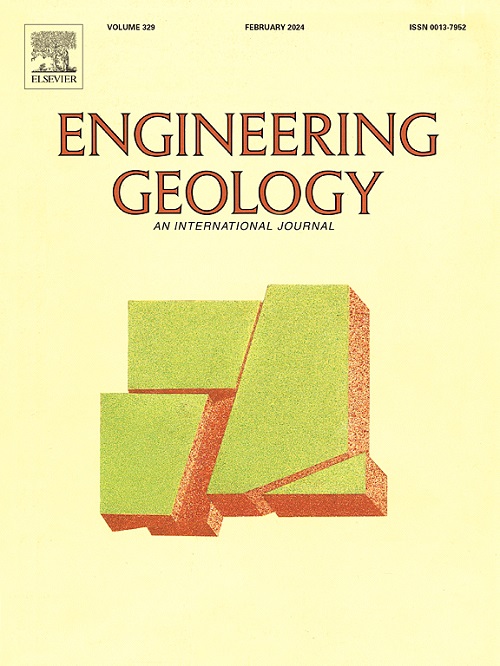Multi-temporal landslide inventory mapping after wildfire and implications for post-fire debris flow activity
IF 6.9
1区 工程技术
Q1 ENGINEERING, GEOLOGICAL
引用次数: 0
Abstract
Severe wildfires can alter vegetation and soil-hydraulic properties, increasing the likelihood of debris flows and landslides during post-fire rainstorms. However, the long-term impacts of wildfire on debris flow activity and landslides remain insufficiently examined, primarily due to the absence of multi-temporal mapping inventories that document both phenomena in burned areas. Therefore, investigating the spatial and temporal evolution of post-fire debris flow activity, along with its dynamic interactions with landslides and other potential controlling factors, is essential for effective post-fire hazard prevention and mitigation. Based on multi-temporal field investigations and multi-source remote sensing data, systematic inventories of landslides and debris flows were developed to quantify the spatiotemporal changes in post-fire debris flow activity and landslide sediment supply capacity from 2020 to 2023 following the 28 March 2020 Xiangjiao Fire in Muli County, China. The results indicate that post-fire debris flow activity increased until the second rainy season after the wildfire, then gradually decayed, with dominant mechanisms shifting from runoff erosion to channel-bed and landslide erosion. In contrast, the occurrence of post-fire landslides exhibited a lagged peak, with the landslide sediment supply capacity steadily increasing over the four-year period following fire. Most landslides occurred on steep, south-facing slopes and were characterized by small, shallow failure processes. Additionally, this study examined the dynamic impacts of fire severity, topography, and landslide materials on post-fire debris flow activity. In the early stages, basins with steeper slopes and higher fire severity exhibited higher debris flow activity, primarily driven by runoff erosion processes and minimally influenced by landslide materials. Over time, a strong spatial and temporal correlation emerged between debris flow activity and variations in landslide sediment supply capacity, indicating that sediment supply became the dominant factor in later stages. Consequently, basins with high landslide sediment supply potential may experience prolonged debris flow activity beyond initial expectations.
求助全文
约1分钟内获得全文
求助全文
来源期刊

Engineering Geology
地学-地球科学综合
CiteScore
13.70
自引率
12.20%
发文量
327
审稿时长
5.6 months
期刊介绍:
Engineering Geology, an international interdisciplinary journal, serves as a bridge between earth sciences and engineering, focusing on geological and geotechnical engineering. It welcomes studies with relevance to engineering, environmental concerns, and safety, catering to engineering geologists with backgrounds in geology or civil/mining engineering. Topics include applied geomorphology, structural geology, geophysics, geochemistry, environmental geology, hydrogeology, land use planning, natural hazards, remote sensing, soil and rock mechanics, and applied geotechnical engineering. The journal provides a platform for research at the intersection of geology and engineering disciplines.
 求助内容:
求助内容: 应助结果提醒方式:
应助结果提醒方式:


